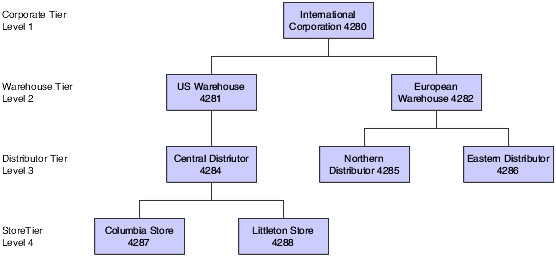Understanding Buying Structures
A buying structure is a representation of the organizational structure of the buying authorities within a customer's company. Each level within the buying structure is called a tier. A tier represents the entity in the organization for which price negotiations take place. Discounts and price negotiations are applied at each level in the buying structure and can be passed on to lower-level tiers within the structure.
Buying structures enable you to manage complex, customer-specific pricing. When you set up a buying structure, you configure a customer's price management according to their organizational structure. For example, you can determine pricing based on entities in the organization that do not order items directly, but have authority over the item price, such as a distributor.
Buying structures use direct price adjustments, which associate a specific customer address book-number with a specific set of price adjustments.
When you set up a buying structure, the system enables you to establish parent/child relationships among the customer address-book numbers within the organizational structure. One address book record is the parent and one or more address book records can be identified as children of that parent.
You can set up the buying structure so that the price that is offered to a distributor or parent is also offered to the entities that are identified as stores (the distributor's children). To set up the buying structure so that the children entities inherit the pricing of the parent, you must enable the Inheritance Flag field in the Price and Adjustment Schedule Revisions program (P4070).
When you add a new company to the structure, or if a company moves from one tier level in the structure to another, you update the buying structure itself.
This example shows the organization of a buying structure:
